|
80x5 -
240x3 -
240x4 -
320x1 -
320x2 -
320x3 -
640x1 -
640x2
Set display option above.
Click on
images to enlarge. |
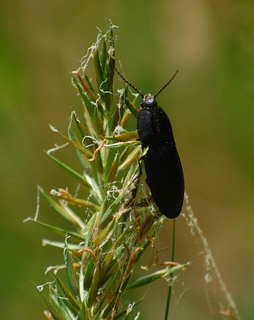
© Copyright Sheryl Pollock 2011
· 9
Calosoma externum, Ground Beetle |
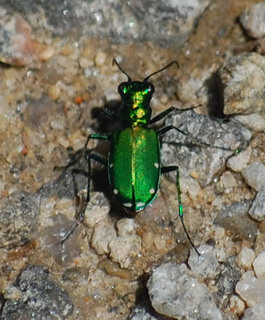
© Copyright Sheryl Pollock 2011
· 9
Cicindela sexguttata, Six-spotted Tiger Beetle |
|
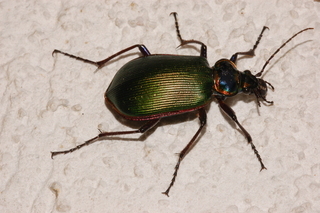
© John Pickering, 2004-2023
· 9
Calosoma scrutator, Fiery Searcher |
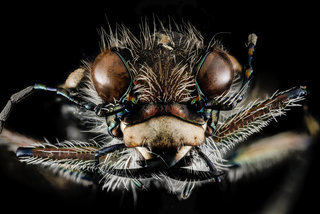
© Copyright source/photographer
· 7
Cicindela tranquebarica U, face, Maryland, Anne Arundel County |
|
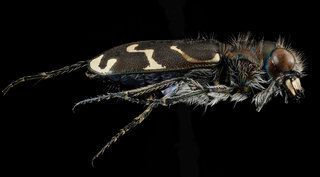
© Copyright source/photographer
· 7
Cicindela tranquebarica, U, side, Maryland, Anne Arundel County |
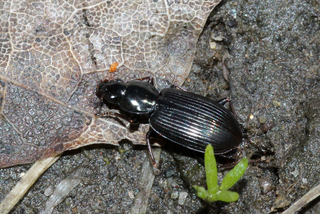
© Copyright Hadel Go 2014 · 7
Agonum punctiforme |
|
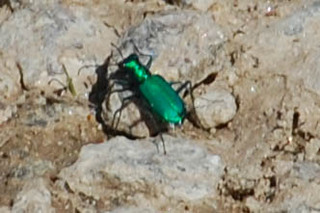
© Copyright Sheryl Pollock 2011
· 6
Cicindela sexguttata, Tiger Beetle |
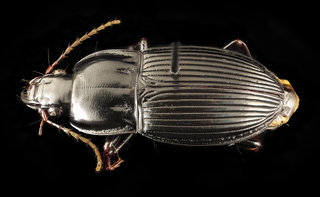
© Copyright source/photographer
· 5
Pterostichus permundus, u, maryland, cove point, back |
|
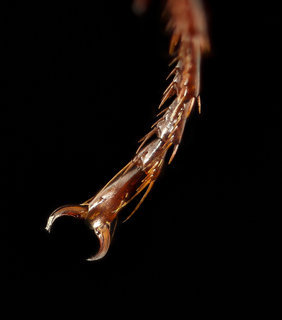
© Copyright source/photographer
· 5
Pterostichus permundus, u, maryland, cove point, tarsal setae |
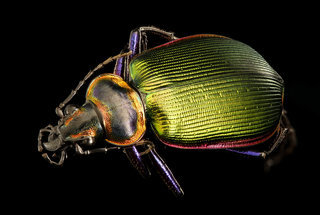
© Copyright source/photographer
· 5
Calosoma scrutator, back, AR |
|
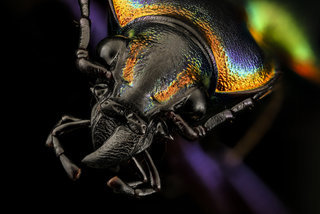
© Copyright source/photographer
· 5
Calosoma scrutator, side, AR |
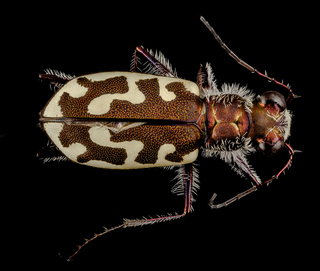
© Copyright source/photographer
· 5
Cicindela hirticollis, back |
|
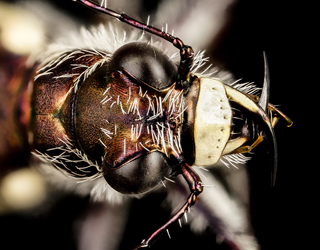
© Copyright source/photographer
· 5
Cicindela hirticollis, face |
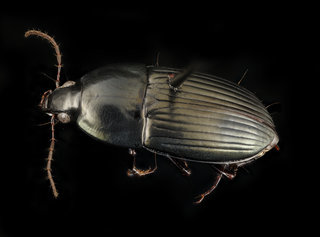
© Copyright source/photographer
· 5
Stenocrepis mexicana, u, maryland, cove point, back |
|
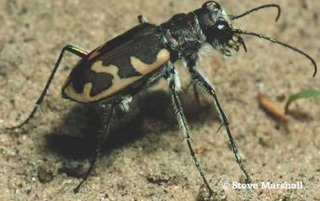
© Steve Marshall, University of Guelph
· 1
Cicindela formosa |
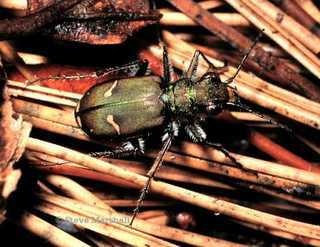
© Steve Marshall, University of Guelph
· 1
Cicindela purpurea |
|
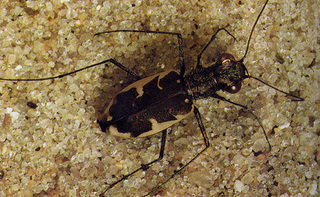
© B. Knisley
· 1
Cicindelidae |
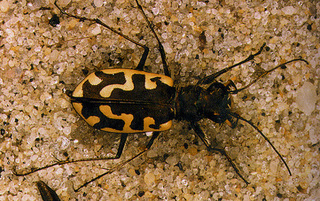
© B. Knisley
· 1
Cicindelidae |
|
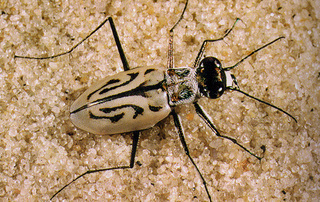
© T. Koenig
· 1
Cicindelidae |
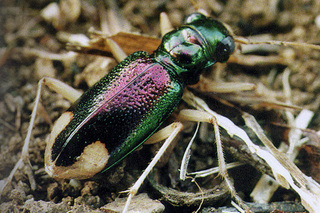
© T. Koenig
· 1
Cicindelidae |
|
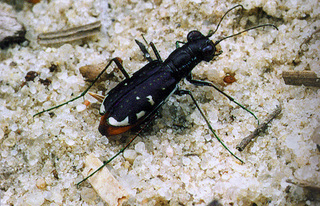
© T. Koenig
· 1
Cicindelidae |
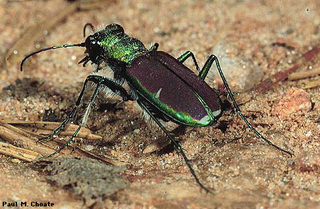
© Paul M. Choate, University of Florida
· 1
Cicindelidae |
|
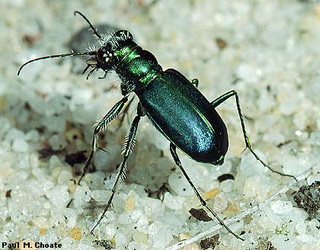
© Paul M. Choate, University of Florida
· 1
Cicindelidae |
|
Overview | |
Click here to visit Steve Marshall's tiger beetles of Ontario website.
"Tiger beetles are one of the more popular groups of beetles among collectors.
They comprise a diverse group containing approximately 2000
species (Pearson, 1988) with many elaborate,
brightly colored, and iridescent patterns. They are distributed worldwide
with the exceptions of Tasmania, Antarctica, and a few small oceanic
islands (Pearson, 1988). They are small to medium sized
insects (7-40 mm) easily identified by their long, sickle-shaped mandibles,
thin running legs, bulbous wide set eyes, and 11 segmented antennae
(Knisley & Schultz, 1997). The eyes tend to be the main
characteristic by which this group is differentiated from the closely related
ground beetles (Carabidae)."-- Knisley & Schultz
|
|
|
Identification |
Identifying characteristics for the family Cicindelidae include:
- First abdominal sternite divided by hind coxae (suborder Adephaga).
- Prominent eyes such that head is as wide as or wider than pronotum.
- Pronotum narrower than elytra.
- Antennae filiform and inserted above base of mandibles.
- Often patterned on elytra, or blue or metallic green.
- Tarsi 5-5-5.
|
|
|
Geographic distribution |
"Tiger beetles occur on most continents. In the United States they are predominantly found in sandy open habitats, including river sandbars, ocean beaches, mudflats, dunes, rocky outcroppings, and even along woodland paths.
There are approximately 100 species of tiger beetles in the US, included in four genera."--(University of Florida)
|
|
|
Natural history | |
"Recognition in the field is attributed to their long, sickle-shaped mandibles,
large and prominent eyes in a head wider than the thorax, often striking and contrasting
patterns on the elytra, and long, cursorial legs (Pearson 1988, Wallis 1961).
This family of beetles is principally diurnal and individuals are readily observed
in preferred open exposed habitats (Pearson 1985, Dreisig 1981)."--(Colorado State University)
- Life Cycle (University of Florida)
- Eggs:
Eggs are deposited singly in shallow depressions. Upon eclosion
the 1st instar larva digs a vertical burrow in which it will remain until pupation
and adult emergence. Before each molt the larva plugs its burrow.
- Larvae:
Larvae are S-shaped, with dorsal abdominal hooks (segment 5)
which are used to hold position in their vertical burrows. Some species have
adapted to surviving long periods of flooding (river species). Burrows range in
depth from 8-10 inches (20-25cm) (Megacephala) to several feet (100cm) (Cicindela spp.),
the extreme example being that of C. lepida whose larvae have been found
to burrow six feet (180cm) deep. Larvae of Florida species (C. abdominalis,
C. scutellaris, and C. hirtilabris) burrow to 30 inches. Species that
occupy salt flats have larvae whose burrow depths are probably limited by the water
table. The few species examined by me have been found to burrow less than one foot.
Location of larval burrows has led to the demise of many populations of
Cicindela dorsalis. Larval burrows have been marked in a photo taken at
Anastasia State Park, Florida. Flags mark the location of C. dorsalis media larvae.
Unfortunately the usual site of burrows is also the preferred path for pedestrian
and vehicular traffic on beaches in Florida. This conflict has resulted in the
complete extinction of populations of this species along many beach areas on both
coasts of Florida, and is a topic of concern for remnant populations of other coastal
tiger beetles. Among Florida species the only two whose larval habitats remain
unknown are C. striga and C. olivacea.
- Adults:
Adults of most species occur only during the summer months at
Florida localities (Megacephala spp., C. abdominalis, C. scabrosa,
C. highlandensis, C. hirtilabris, C. gratiosa and others),
while at least two species occur only during the cooler months in Florida
(C. scutellaris unicolor and C. nigrior). Larvae occur during late
summer and overwinter as last instars. Pupation probably occurs in springtime for
summer species. Larvae occur in same habitat as adults for many species, or are
found in close proximity to adult habitats for those species that occur in wet areas.
- Parasites and Predators:
Tiger beetles are parasitized as larvae by the
Diptera family Bombyliidae and the Hymenoptera family Tiphiidae, genus Methoca
and genus Pterombrus. They also are regularly preyed upon by robber flies of the Diptera family Asilidae.
|
|
|
How to encounter | |
"Adults are active both during daylight hours and at night. During daytime hours
adults are found on sandier portions of alkali flats. Nighttime activity includes
mating. Individuals are readily attracted to lights, including automobile headlights,
"blacklights", and mercury vapor lights. Large numbers may be collected using these attractants."--(University of Florida)
|
|
|
Links to other sites | |
|
|
|
References |
- Dreisig, H. 1981. The rate of predation and its temperature dependence in a tiger beetle Cicindela hybrida. Oikos 36:196-202.
- Knisley, C.B. and T.D. Schultz. 1997. The biology of tiger beetles and a guide to the species of the South Atlantic States. Virginia Museum of Natural History. pp 12-87
.
- Pearson, D.L. 1985. The function of multiple anti-predator mechanisms in adult tiger beetles (Coleoptera: Cicindelidae). Ecological Entomology 10:65-72.
- Pearson, D.L. 1988. Biology of Tiger Beetles. Annual Review of Entomology. 33:123-147.
- Wallis, J.B. 1961. The Cicindelidae of Canada. University of Toronto Press. Toronto
.
|
|
|
Acknowledgements |
Steve Marshall
Environmental Biology
University of Guelph, Ontario
|
|
| Supported by | |
|
Following served from James L. Castner, University of Florida, Department of Entomology & Nematology |
Top | See original context
|
Following modified from BioKIDS University of Michigan Department of Education and Museum of Zoology
|
Top | See original
Skip directly to
main content
.

Kids' Inquiry of Diverse Species
Local animals in this group:
Additional information:
Find carabes, ground beetles information at
carabes, ground beetles
Carabidae
What do they look like?
Ground Beetles are rather diverse in shape. Most adults are glossy and black, but some are iridescent, some are green, some are yellow or orange. Their bodies are usually flattened with grooves or rows of punctures running down the wing covers. They are usually a bit longer than wide, have long legs (for a beetle) and run fast. Larvae have large heads and are somewhat hairy.
Where do they live?
This is a very large family of beetles, with over 26,000 species known from around the world, and many thousands probably not yet known. In Michigan there are as many as 450 species of Ground Beetles.
What kind of habitat do they need?
Ground beetles are found in just about any habitat that has other small animals for them to eat. They are most diverse and common in forests, but can be found on high mountains, in deserts, even on the seashore.
How do they grow?
See page on all Beetles.
How long do they live?
Most species in this family mature in one year, and can live for 2-3.
How do they behave?
These beetles are only active at night. They emerge from their hiding places under rocks and logs and search for prey, sometimes climbing up into vegetation. Larvae do not come out on the surface but stay in dead leaves and the surface soil. They are solitary animals, only coming together to mate.
How do they communicate with each other?
Mostly by taste and smell, though they have large eyes, and no doubt do a lot of touching of things.
What do they eat?
Ground beetle larvae and adults are predators, eating other small animals. Some speciailze on a particular group (
slugs
for example, or
caterpillars
) others will eat anything they can find.
-
Primary Diet
-
carnivore
-
eats terrestrial vertebrates
-
eats non-insect arthropods
What eats them and how do they avoid being eaten?
Ground beetles have their tough beetle shell for protection. They run fast, and only hunt at night. Many can give off bad-tasting chemicals. One group, bombardier beetles, can shoot out boiling hot toxic chemicals from glands on their abdomen!
Do they cause problems?
A few species in this group attack seeds of corn as well as animal prey, but this is usually a minor factor.
-
Ways that these animals might be a problem for humans
-
crop pest
How do they interact with us?
This group of beetles is very important in controlling pests in the soil, especially the larvae of other insects.
-
Ways that people benefit from these animals:
-
controls pest population
Contributors
George Hammond (author), Animal Diversity Web.
Â


BioKIDS home
  | Â
Questions?
  | Â
Animal Diversity Web
  | Â
Cybertracker Tools
Hammond, G. . "Carabidae" (On-line), Animal Diversity Web. Accessed April 30, 2024 at http://www.biokids.umich.edu/accounts/Carabidae/
BioKIDS is sponsored in part by the Interagency Education Research Initiative. It is a partnership of the
University of Michigan
School of Education
,
University of Michigan
Museum of Zoology
, and the
Detroit Public Schools
. This material is based upon work supported by the
National Science Foundation
under Grant DRL-0628151.
Copyright © 2002-2024, The Regents of the University of Michigan. All rights reserved.

|
Updated: 2024-04-30 07:33:16 gmt
|
